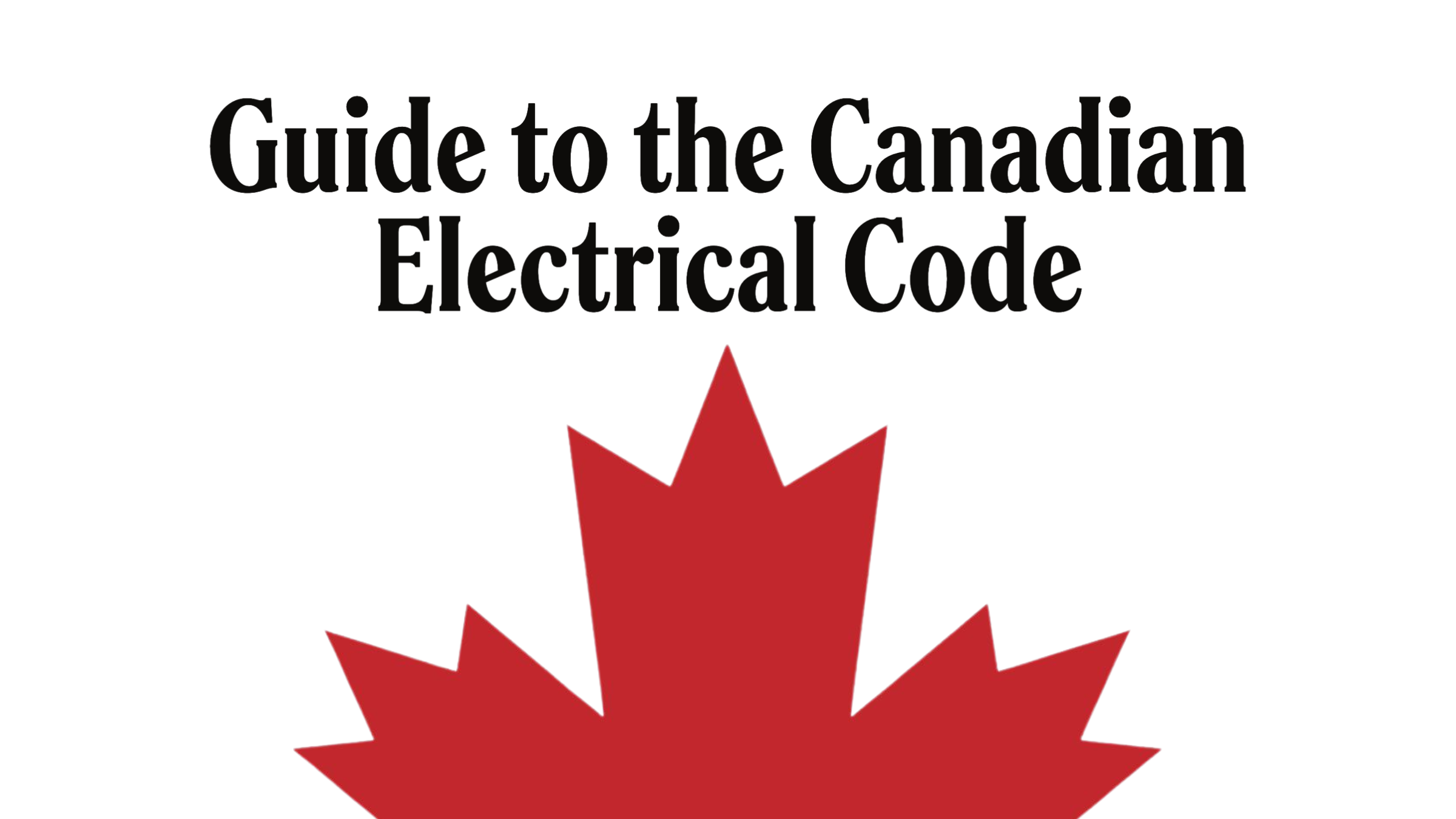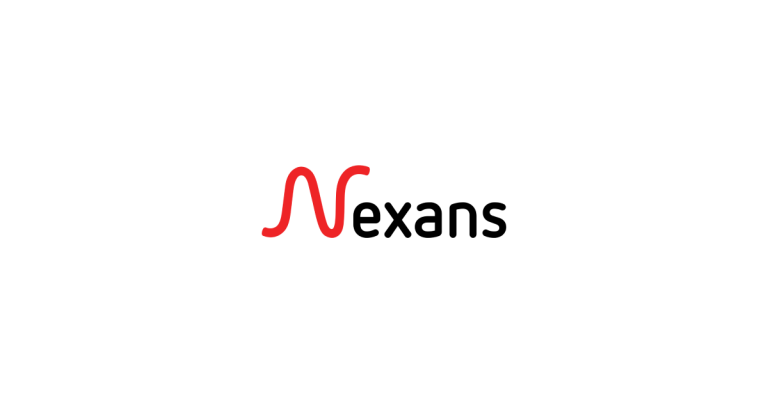Guide to the Canadian Electrical Code, Part 1[i], 26th Edition– A Road Map: Section 12

May 6, 2024
By William (Bill) Burr[i]
[i] William (Bill) Burr is an associate member of the Canadian Electrical Code, Part 1, Technical Committee and formerly Chair of the Canadian Advisory Council on Electrical Safety (CACES), Chief Electrical and Elevator Inspector for the Province of BC & the Northwest Territories, Director of Electrical and Gas Standards Development and Director of Conformity Assessment at CSA Group. Bill can be reached at Burr and Associates Consulting billburr@gmail.com..
The Code is a comprehensive document. Sometimes, it can seem daunting to quickly find the information you need. This series of articles provides a guide to help users find their way through this critical document. This is not intended to replace the notes in Appendix B, or the explanations of individual requirements contained in the CEC Handbook but will hopefully provide some help in navigating the Code.
Section 12 – Wiring Methods
(The 26th Edition of the Canadian Electrical Code, Part 1 (CSA C21-1:24) is now available. To order a copy go to https://www.csagroup.org/store/ This discussion of Section 10 is based on the 26th edition)
Section 12 is a general section of the Code and applies to all low voltage and extra low voltage wiring installations except for:
- Class 2 circuits unless otherwise specified in Extra-low-voltage Suspended Ceiling Power Distribution Systems – Rules 12-2300 to 12-2320 and Section 16 Class 1 and Class 2 circuits,
- Community Antenna Distribution and Radio And Television Circuits unless otherwise specified in Section 54,
- Optical Fiber Cables unless otherwise specified in Section 56, and
- Conductors Integral to Factory-Built Equipment.
The provisions of this Section apply to high voltage installations except as modified by the requirements of Section 36.
Section 12 of the Code is divided into six parts:
- General Requirements,
- Conductors,
- Raceways,
- Cablebus,
- Manufactured wiring systems, and,
- Installation of boxes, cabinets, outlets and terminal fittings.
Generally, the definitions in Section 0 apply throughout, however Rule 12-002 Special terminology outlines a definition for Grade level in-ground enclosures. In addition, there are some special terminology definitions in the sub-section rules covering Flat conductor cable type FCC, and Extra-low-voltage suspended ceiling power distribution systems.
General Requirements
Rules 12-010 to 12-020 apply specifically to locations where fire, mechanical, moisture or other environmental issues, must be considered, or locations where conductors or cables may be prohibited, and equipment must be marked for the purpose and include:
- wiring in ducts and plenum chambers,
- furnace cold-air return duct formed by boxing in between joists,
- underground installations,
- lightning down conductors,
- entry of raceways and cables into buildings,
- wiring under raised floors for data processing and similar systems, and
- Cables or raceways installed in roof decking systems.
Conductors
Rules 12-100 to 12-122 apply to the installation of all types of insulated conductors and cables. They are divided into a General subdivision and individual subdivisions for each type of insulated conductor and cable.
Rule 12-100 establishes that types of insulated conductors must be chosen for their location with respect to moisture, temperature, degree of enclosure, mechanical protection, and resistance to harmful substances such as hydrocarbons, ketones, esters, alcohols, or their liquid derivatives. Table 19 and Appendix B notes offer additional specifications on choosing the appropriate type of insulated conductor.
Rules 12-102 to 12-122 provide general considerations for the installation of all conductors such as:
- the treatment of insulated conductors, especially handling at any time in low ambient temperatures,
- flame test coverings,
- multi- and single conductor cables,
- insulated conductors in parallel,
- radii of bends insulated conductors,
- conductor joints and splices,
- treatment of the ends of insulated conductors,
- termination of conductors,
- termination and splicing of aluminum conductors,
- supporting of conductors, and
- equipment wire.
You will find that Table 19. Tables 11A, 11 B and extensive notes in Appendix B provide additional helpful information including a diagram outlining configurations for the installation of parallel insulated conductors. The rest of the Conductor subdivision deals with the rules for specific types of conductors:
Open Wiring
Rules 12-200 to 12-206 apply only to single conductors run as open wiring and covers:
- Installation of insulated conductors
- Ends of existing insulated conductors, and
- Where existing open wiring connects to other systems of wiring
Exposed Wiring on Exteriors of Buildings
Rules 12-300 to 12-320 provide the specifications for exposed wiring on exteriors of buildings and between buildings and poles on the same premises and contains requirements for:
- types of insulated conductors and cables according to Table 19
- location of insulated conductors and cables,
- insulated conductor and cable supports,
- Maximum span of overhead conductors
- clearance of insulated conductors and cables,
- conductors over buildings,
- conductors on trestles,
- power supply insulated conductors and cables, and
- messenger cables.
Flexible Cables
Rules 12-400 to 12-406 outline requirements for flexible cord and cables and include:
- uses of flexible cord,
- flexible cord used in show windows or show cases, and
- uses of portable power cable (in addition refer to Tables 12E and 19).
Non-Metallic-Jacketed Cable
Rules 12-500 to 12-524 apply to non-metallic-jacked cable other than:
- Types NMD90, NMWU,
- Type FAS cables installed in accordance with Section 32,
- Class 2 applications installed in accordance with Section 16,
- cables and flexible cords used in accordance with Rule 12-102 4); and
- mineral-insulated cable, aluminum-sheathed cable, copper-sheathed cable and armoured cables with or without a jacket covered by Rules 12-600 and 12-700.
These rules include:
- maximum voltage,
- use of jacked cable,
- method of installation,
- bending and stapling of cable,
- running of cable between boxes and fittings,
- not to be embedded,
- protection for cable in concealed installations,
- protection for cable in exposed installations,
- fished cable installation,
- types of boxes and fittings, and
- provision for bonding.
Non-metallic-sheathed cable Types NMD90 and NMWU
Rules 12-552 to 12-576 apply only to cable Types NMD90 and NMWU and include:
- Maximum voltage,
- Use of Type NMD90 and NMWU cables,
- Method of installation,
- Bending and stapling of cable,
- Running of cable between boxes and fittings,
- Not to be embedded,
- Protection of cables in non-concealed locations,
- Protection for cable in exposed installations,
- Fished cable installation,
- Where outlet boxes are not required,
- Types of boxes and fittings,
- Provision for bonding.
Armoured Cable
Rules 12-600 to 12-618 apply only to armoured cable installations and include:
- use,
- protection for armoured cables in lanes,
- use of thermoplastic-covered armoured cable,
- continuity of armoured cable,
- terminating armoured cable,
- proximity to knob-and-tube and non-metallic-sheathed cable systems,
- radii of bends in armoured cables,
- concealed armoured cable installation, and
- running of cable between boxes, etc.
Mineral-Insulated Cable, Aluminum-Sheathed Cable, and Copper-Sheathed Cable
Rules 12-700 to 12-718 cover the installation of mineral-insulated cable, aluminum-sheathed cable, and copper-sheathed cable and amend the other Rules of this Code where they apply and include:
- use of these cables,
- use when embedded,
- method of supporting,
- direct earth burial,
- mechanical protection,
- radii of bends,
- termination of mineral-insulated cable
- connection to other forms of wiring, and
- Maximum sheath temperature of mineral-insulated cable.
Flat Conductor Cable Type FCC
Rules 12-800 to 12-824 apply only to the installation of Type FCC under-carpet wiring systems and include:
- definitions for special terminology applying to this subsection only including bottom shield, insulating end, metal tape, top shield, transition assembly, type FCC cable, type FCC cable connector, and type FCC system,
- use permitted,
- use prohibited,
- floor covering,
- connections and terminations,
- shields,
- enclosure and shield continuity,
- connection to other systems,
- anchoring,
- crossings,
- mechanical protection, and
- system height,
Raceways
Rules 12-900 to 12-2208 apply to the installation of all types of raceways. They are divided into a General subdivision and subdivisions for each type of raceway.
General
Rules 12-900 to 12-944 apply to raceways and to insulated conductors and bare conductors run in raceways and includes:
- types of insulated conductors and cables,
- conductors in raceways,
- protection of insulated conductors at ends of raceways,
- inserting insulated conductors in raceways,
- conductors and cables in conduit and tubing,
- joints or splices within raceways,
- stranding of conductors,
- electrical continuity of raceways,
- mechanical continuity of raceways,
- support of raceways,
- removal of fins and burrs of raceways,
- radii of bends in raceways,
- junction of open wiring and raceways,
- entry of underground conduits into buildings,
- raceways installed underground or where moisture may accumulate,
- metal raceways in plaster,
- protection for raceways,
- raceways installed in concrete, cinder concrete, and cinder fill,
- raceway completely installed before insulated conductors or cables are installed,
- capping of unused raceways,
- maximum number of bends in raceways, and
- metal raceways.
Rigid and flexible metal conduit
Rules 12-1000 to 12-1014 apply only to the installation of rigid and flexible metal conduit and includes:
- use,
- minimum size of conduits,
- conduit threads,
- thread engagement,
- maximum spacing of conduit supports,
- expansion and contraction of conduit, and
- insulated conductors and cables in conduit.
Rigid PVC conduit
Rules 12-1100 to 12-1124 apply to the installation of Rigid PVC conduit and include:
- use,
- restrictions on use,
- temperature limitations,
- mechanical protection,
- field bends,
- support of luminaires,
- fittings,
- maximum spacing of conduit supports,
- support of equipment,
- expansion joints,
- maximum number of conductors,
- provision for bonding continuity, and
- split straight conduit.
Rigid Types EB1 and DB2/ES2 PVC conduit
Rules 12-1150 to 12-1166 apply to the installation of Rigid Types EB1 and DB2/ES2 PVC conduit and includes:
- use permitted,
- restrictions on use,
- temperature limitations,
- field bends,
- fittings,
- maximum number of conductors,
- method of installation,
- split straight conduit, and
- provision for bonding continuity.
Rigid RTRC conduit
Rules 12-1200 to 12-1220 apply only to the installation of rigid RTRC conduit Types AG, BG, and XW and include:
- use,
- restrictions on use,
- mechanical protection,
- field bends,
- temperature limitations,
- fittings,
- expansion joints,
- conduit supports,
- maximum number of conductors, and
- provision for bonding.
High-density polyethylene (HDPE) conduit and HDPE conductors-in-conduit
Rules 12-1250 to 12-1268 apply to the installation of high-density polyethylene (HDPE) conduit and installing HDPE conductors in conduit and includes:
- use permitted,
- restrictions on use,
- method of installation,
- temperature limitations,
- field bends,
- fittings,
- expansion joints,
- maximum number of conductors,
- split straight conduit, and
- provision for bonding continuity.
Liquid-tight flexible conduit
Rules 12-1300 to 12-1308 apply only to liquid-tight flexible conduit and include:
- use of liquid-tight flexible metal and non-metallic conduit,
- maximum number of conductors,
- provisions for bonding, and
- supports.
Electrical metallic tubing
Rules 12-1400 to 12-1414 apply only to electrical metallic tubing and include:
- use,
- restrictions on use,
- supports,
- minimum tubing size,
- maximum number of conductors,
- connections and couplings, and
- provision for bonding continuity.
Electrical non-metallic tubing
Rules 12-1500 to 12-1514 apply to the installation of electrical non-metallic tubing and include:
- use,
- restriction on use,
- supports,
- maximum number of conductors,
- temperature limitations,
- connections and couplings,
- support of equipment, and
- provision for bonding continuity.
Surface raceways
Rules 12-1600 to 12-1614 apply only to surface raceways and include:
- use of surface raceways,
- temperature limitations,
- conductors in surface raceways,
- maximum voltage,
- joints and splices,
- provisions for bonding, and
- flat cable systems.
Underfloor raceways
Rules 12-1700 to 12-1718 apply to the installation of underfloor raceways and include:
- where underfloor raceways are permitted,
- method of installing underfloor raceways,
- fittings for underfloor raceways,
- taps and splices in underfloor raceways,
- inserts and junction boxes for underfloor raceways,
- setting of inserts,
- discontinued outlets in underfloor raceways,
- area of conductors in underfloor raceways,
- underfloor raceway junction boxes, and
- inserts in post- and pre-stressed concrete floors.
Cellular floors
Rules 12-1800 to 12-1820 apply to the installation of cellular floors and include:
- installation in accordance with the manufacturer’s instructions,
- conductors in cellular floors,
- maximum conductor size in cellular floors,
- cross-sectional area of cellular floors,
- taps and splices in cellular floors,
- cellular floor markers,
- cellular floor junction boxes,
- provision for bonding,
- cellular floor inserts,
- cellular floor extensions, and
- cellular floor discontinued outlets.
Auxiliary gutters
Rules 12-1900 to 12-1904 apply to the installation of auxiliary gutters and include:
- where auxiliary gutters are used to supplement wiring spaces,
- auxiliary gutter supports, and
- auxiliary gutter cross-sectional area.
Busways and splitters
Rules 12-2000 to 12-2020 apply to the installation of busways and splitters and include:
- use,
- extensions from busways and splitters,
- AC circuits in busways and splitters,
- busway and splitter supports,
- method of installation of busways,
- plug-in devices for busways,
- reduction in size of busways,
- length of busways used as branch circuits,
- manufacturer’s identification on busways and splitters,
- taps in splitters, and
- circuit restrictions in splitters.
Wireways
Rules 12-2100 to 12-2112 apply to the installation of wireways and include:
- where wireways may be used,
- method of installation of wireways,
- conductors in wireways,
- taps and splices in wireways,
- extensions from wireways,
- AC circuits in wireways, and
- Manufacturer’s identification on wireways.
Cable trays
Rules 12-2200 to 12-2208 apply to the installation of cable trays and include:
- method of installation,
- insulated conductors and cables in cable trays,
- joints and splices within cable trays,
- connection to other wiring methods, and
- provisions for bonding.
Cablebus
Rules 12-2250 to 12-2258 apply only to the installation of cablebus as a complete system and include:
- use of cablebus,
- methods of installation,
- connection to other wiring methods, and
- provisions for bonding.
Extra-low-voltage suspended ceiling power distribution systems (this is a new subsection)
Rules 12-2300 to 12-2320 apply only to the installation of extra-low-voltage suspended ceiling power distribution systems and include:
- definitions for special terminology applying to this subsection only including busbar, busbar support, connector, load connector, pendant connector, power feed connector, rail-to-rail connector, extra-low-voltage suspended ceiling power distribution system, grid bus rail, rail, reverse polarity protection (back-feed protection), and suspended ceiling grid,
- general,
- use permitted,
- use prohibited,
- Class 2 circuit conductors,
- disconnecting means,
- securing and supporting,
- connectors,
- output connections and reverse polarity protection (back-feed protection), and
- system grounding.
Manufactured wiring systems
Rules 12-2500 and 12-2502 apply to the installation of manufactured wiring systems and include:
- uses permitted, and
- installation.
Bare busbars and risers
Rule 12-2600 provides requirements where bare busbars and risers may be used.
Installation of boxes, cabinets, outlets, and terminal fittings
Rules 12-3000 and 12-3036 apply to the installation of boxes, cabinets, outlets, and terminal fittings and include:
- outlet boxes,
- outlet box covers,
- terminal fittings,
- terminal fittings behind switchboards,
- boxes in concrete construction,
- outlet box supports,
- boxes, cabinets, and fitting supports,
- accessibility of junction boxes,
- outlet boxes, cabinets, and fittings,
- outlet boxes attached to existing plaster work,
- outlet boxes, etc., in damp places,
- entrance of cables into boxes, cabinets, and fittings,
- unused openings in boxes, cabinets, and fittings,
- extensions from existing outlets,
- multi-outlet assemblies,
- insulated conductors in boxes, cabinets, or fittings,
- wiring space in enclosures,
- maximum number of insulated conductors in a box, and
- pull box or junction box sizes.
Previous Installment: Section 10 – Grounding and Bonding
In the next installment we will discuss Section 14 – Protection and control.
[i] Source: CSA C22.1:24, Canadian Electrical Code, Part 1 – Safety Standard for Electrical Installations. © 2021 Canadian Standards Association. Please visit Store – CSA Group or call 1-800-463-6727. With the permission of CSA Group, the material is reproduced from CSA Group standard CSA C22.1:21, Canadian Electrical Code, Part 1 – Safety Standard for Electrical Installations. This material is not the complete and official position of CSA Group on the referenced subject, which is represented solely by the Standard in its entirety. While use of the material has been authorized, CSA Group is not responsible for the manner in which the data are presented, nor for any representations and interpretations. No further reproduction is permitted. For more information or to purchase standard(s) from CSA Group, please visit Store – CSA Group or call 1-800-463-6727.

















